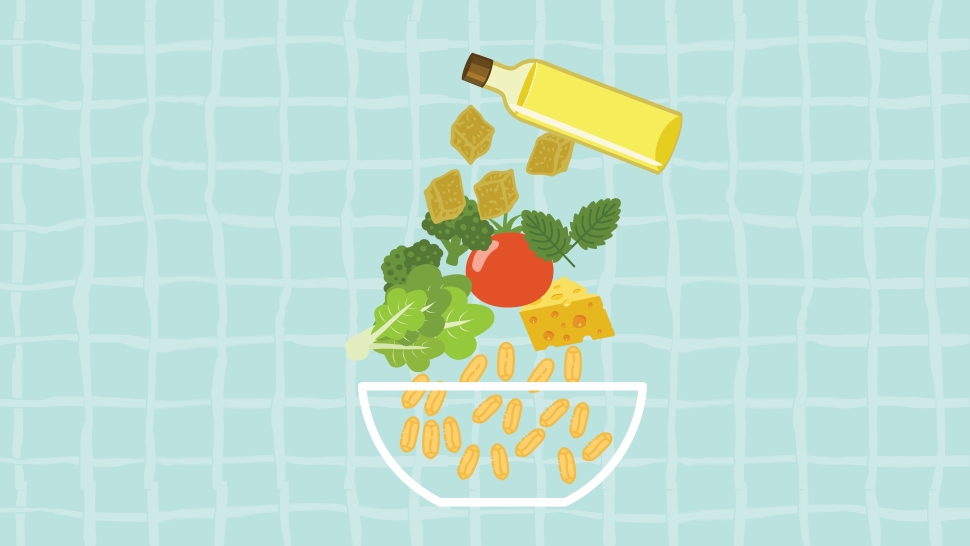Build Your Own 100% Local Grain Bowl at Home
- by bonappetit

During this year’s Eat Local Challenge celebration, we’re highlighting ways that you can support local farmers and makers throughout the year. We’ve found that one of the easiest ways to eat all-local meals is through versatile entrées like the trendy and oh-so-delicious grain bowl. We have compiled a flexible formula that will help you get creative with locally available ingredients. Wherever you shop, from farmers’ markets, farmstands, and local co-ops to grocery stores, the tips and tricks below will help you develop delicious bowls, again and again. Use our shopping guide to help build a list of ingredients and read on to learn more!
Dressing: For any dressing, you always need oil, an acid, and a sweetener. While not everyone is lucky enough to have access to local olive oil (looking at you, California!), local sunflower, canola, and even hemp oils are available in many parts of the country. You can concoct a delicious and easily prepared dressing with two parts oil, one part acid (local apple cider vinegar, or local lime or lemon juice do the trick), and one-part local sweetener like honey, maple syrup, or sorghum syrup. Shake thoroughly!
Crunch: Grain bowls are all about combining a diversity of textures. Add a crunchy surprise to yours with local nuts and seeds or try adding locally produced crispy tofu or tempeh. In the Pacific Northwest and California, nut trees like almonds and hazelnuts provide ready-made toppings. Elsewhere, finding local nuts and seeds can be a bit tricker, though across the northeast and Midwest local sunflower seeds are readily available.
Herbs: Fresh herbs are available throughout the country for much of the year. Try chopping up basil, parsley, chives, cilantro, or even mint to your salad to add a burst flavor.
Produce: Fresh, local produce is the true star of any self-respecting grain bowl. Get creative with what is seasonally available, using fresh vegetables and fruits to change the overall theme of your bowl. In the summertime, for instance, try a bowl with roasted corn, diced tomatoes, and fresh cucumbers. In the fall, opt for a harvest bowl featuring roasted beets and butternut squash.
Protein: A diversity of local protein options are available, regardless of where you live. For local plant-based proteins, try fresh edamame, garbanzo beans, black beans, or peas. For the dairy-lovers amongst us, local cheeses are also a great option to add to a bowl.
Greens: Thanks to greenhouses and season extension techniques, many types of local fresh greens are widely available, even during the winter months in the coldest parts of the country. Try typical favorites like lettuce, spinach, arugula, and kale, or branch out with specialty greens like claytonia, tatsoi, or purslane.
Grains: The recent explosion of interest in artisan and ancient grains means that many local producers grow and sell interesting grists. Options in the Midwest and Northeast include bulgur wheat and farro, California is known for its rice, and in the South, heat-loving grains like amaranth thrive.